Master Essential Wilderness Survival Skills for Ultimate Outdoor Resilience
To truly thrive in the wilderness, it’s imperative to cultivate a unique set of survival skills, maintain a composed mindset, and engage in meticulous preparations. This comprehensive guide is crafted to furnish you with vital knowledge and strategies for navigating and succeeding in the great outdoors, whether you’re an enthusiastic adventurer or unexpectedly finding yourself in a survival predicament. Understanding the nuances of wilderness survival can transform your experience, making it not only survivable but also enriching. The ability to adapt and apply learned techniques could mean the difference between a memorable adventure and a dangerous situation.
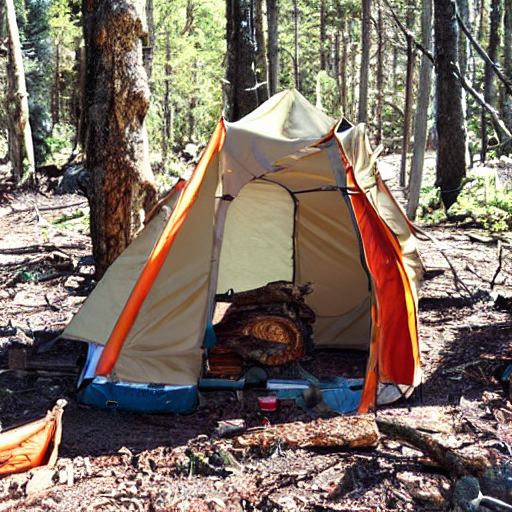
Develop a Resilient Mindset: Stay Calm and Analyze Your Wilderness Environment
Fostering an effective mindset is crucial for implementing a successful survival strategy. In times of crisis, your ability to maintain a calm and collected mental state becomes your most valuable asset, especially when your very survival is at stake. When panic sets in, it clouds your judgment, leading to hasty decisions and impaired reasoning abilities. Therefore, developing the skill to remain composed is vital for navigating through adversity. By training your mind to stay focused, you can enhance your chances of identifying practical solutions to the challenges ahead.
Imagine yourself lost in an expansive, uncharted wilderness, far from the comforts of civilization. In such concerning moments, fear can easily take hold of your thoughts. It is essential to take a step back, pause, and regain your composure, allowing clarity and logical thinking to replace doubt and confusion. Panic spreads rapidly, complicating the challenges you face. Conversely, a tranquil mind acts as a reliable compass, guiding you through the chaos of uncertainty and helping you make informed decisions. This mental clarity is crucial for survival and can significantly improve your problem-solving capabilities.
Once you’ve calmed your racing thoughts and taken a deep breath, redirect your focus to carefully assessing your surroundings. This involves closely observing the resources available to you and recognizing any potential threats present in the wild. Are there dangerous terrains or wildlife nearby? What resources can be utilized for constructing shelter, sourcing water, or signaling for assistance? Evaluating these factors can help you prioritize your next steps effectively, ensuring you address the most pressing survival needs first.
This assessment is not simply a task; it is the foundation upon which your entire survival strategy is constructed. A meticulous evaluation enables you to make informed choices, prioritize essential actions, and formulate a coherent plan that effectively addresses the challenges inherent in the wilderness. Without a clear understanding of your environment, your survival chances diminish significantly.
The mantra “stay calm and assess” encapsulates the psychological resilience required when confronted with unforeseen obstacles. It signifies a moment of acknowledging the weight of your situation while choosing to respond with composure rather than chaos. By cultivating a peaceful mindset and conducting a thorough assessment, you create a structured approach to your survival. In the face of the unknown, remember that your thoughts can be the key to unlocking your path to survival.
Recognize and Prioritize Survival Needs: Formulate a Strategic Wilderness Action Plan
Understanding survival priorities is akin to choreography in a complex dance with the forces of nature. Think of it as a strategic framework that guides your actions during a survival emergency, ensuring that you methodically address the most critical needs first. This structured approach can help you maintain focus and clarity in high-pressure situations, enhancing your overall survival skills.
The first and foremost aspect of this guideline is prioritizing protection. Your safety is non-negotiable; thus, creating a secure environment must always take precedence. This involves safeguarding yourself from immediate threats such as inclement weather, dangerous wildlife, and various potential hazards presented by the natural world. It means making conscious decisions to protect yourself from the elements and potential dangers that could compromise your well-being.
Once you’ve established a protective layer, the next focus should shift to your location. A safe and secure site becomes your sanctuary. Building a sturdy shelter not only shields you from the elements but also serves as a psychological anchor, providing a space to regroup, strategize, and endure the challenges that nature may present. The act of creating a shelter can foster a sense of security that is essential for psychological well-being in survival situations.
Following protection and location, your next priority is securing water—the essential elixir of life. Identifying and sourcing clean water is critical, as even mild dehydration can quickly deplete your physical and mental capabilities. Employ purification methods such as boiling, purification tablets, or a reliable water filter to convert potentially contaminated water into a life-sustaining resource. Ensuring a fresh water supply is non-negotiable for your survival strategy.
After addressing protection, location, and water, you can then shift your attention to nutrition. While food is fundamentally important, it takes a backseat to more immediate survival needs. This phase may involve foraging for edible plants, learning basic trapping techniques, or attempting to catch fish. Nature becomes your primary provider of sustenance, and understanding what is available in your environment can significantly enhance your survival capabilities.
The final aspect of survival priorities is signaling for help. Once you have met your essential needs, it’s time to make your presence known. This phase increases your chances of being spotted and rescued, whether through the use of bright colors, signaling devices like whistles and mirrors, or crafting identifiable signals that stand out. The sooner you can attract attention, the better your chances of rescue become.
The rule of survival priorities acts as your guiding compass in the wilderness, ensuring that you navigate challenges in a methodical manner. By adhering to this structured approach, you not only enhance your chances of survival but also regain a sense of control in an otherwise unpredictable environment. With this roadmap, the chaos of survival transforms into a manageable journey leading to rescue and safety.
Construct a Shelter: Your Essential Defense Against Harsh Wilderness Conditions
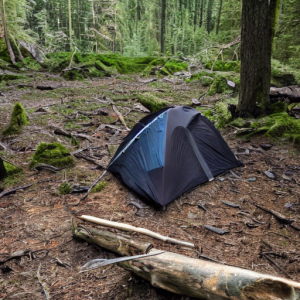 Constructing a shelter is the cornerstone of wilderness survival. It serves as your first line of defense against the elements and the unpredictable challenges presented by the great outdoors. Mastering this essential skill involves creating a refuge that not only protects you from adverse weather but also acts as a psychological anchor amid uncertainty. A well-built shelter can provide comfort and security, allowing you to focus on other survival tasks.
Constructing a shelter is the cornerstone of wilderness survival. It serves as your first line of defense against the elements and the unpredictable challenges presented by the great outdoors. Mastering this essential skill involves creating a refuge that not only protects you from adverse weather but also acts as a psychological anchor amid uncertainty. A well-built shelter can provide comfort and security, allowing you to focus on other survival tasks.
When faced with the challenge of finding shelter, your resourcefulness becomes an invaluable asset. Your goal is to create a safe space utilizing the abundant natural resources around you or any equipment you may have on hand. This could involve constructing a temporary lean-to from sturdy branches and foliage, repurposing a tarp or emergency blanket, or even digging into the landscape for additional protection. The creativity you employ in building your shelter can have a significant impact on your overall comfort and safety.
Understanding the fundamental principles of shelter construction is critical to your survival. It’s not merely about erecting a physical barrier against the elements; it’s about fortifying your ability to withstand harsh conditions. Choosing a location that optimally balances proximity to essential resources such as water and foraging plants is crucial while ensuring safety and visibility. The right location enhances your chances of survival by providing easy access to necessary resources.
Your shelter is more than just a physical structure; it transforms into a sanctuary, instilling a sense of security during turbulent times. The act of building a shelter is a strategic move that empowers you to confront the challenges ahead, providing a sense of control in an otherwise chaotic environment. The emotional benefits of having a dedicated space can help improve your mental state and resilience.
In the broader context of wilderness survival, the ability to construct a shelter is a fundamental skill that every outdoor enthusiast should master. This guide’s ultimate goal is to equip individuals with the knowledge and skills necessary to thrive in wild settings. By mastering shelter construction, you evolve from a passive participant in the wilderness to an active, adaptable survivor, resilient in the face of adversity. Embrace this essential skill, and you will have laid the groundwork for a successful expedition through the complexities of wilderness survival.
Water Sourcing Techniques: Securely Hydrate in the Wilderness
The quest for water is paramount, and mastering the art of water procurement is essential for survival. To hydrate effectively in the wilderness, focus on two key aspects: identifying reliable water sources and employing effective purification methods. This wilderness survival guide will break down the essential techniques necessary to ensure a secure and sustainable water supply. Understanding the fundamentals of water sourcing can significantly enhance your survival prospects.
First and foremost, the significance of water in the natural environment cannot be overstated. Hydration is not merely a comfort; it is a lifeline that sustains bodily functions and cognitive abilities. Therefore, identifying nearby water sources is your first priority. Rivers, lakes, and streams often serve as nature’s reservoirs in the vast wilderness. Recognizing the best places to find water can save you significant time and energy.
However, the mere presence of water does not guarantee its cleanliness or safety for consumption. This is where the purification process becomes critical. The mantra in wilderness survival is clear: prioritize purification to ensure the water you consume is safe. Boiling is one of the oldest and most reliable purification methods. Simply bring water to a rolling boil for several minutes to effectively eliminate harmful bacteria and pathogens. This method is tried and tested, ensuring that you can safely hydrate in various environments.
For those seeking more modern and convenient methods, purification tablets or portable water filters can be invaluable allies. These tools serve as safeguards against contaminants that can often be found in water sources. Choose your purification method based on the resources available and the urgency of your hydration needs, ensuring you always have access to clean, safe drinking water. This flexibility allows you to adapt to different situations and environments, enhancing your survival skills.
Foraging Skills and Food Acquisition: Tap into Nature’s Bounty
The ability to forage and acquire food in the great outdoors is essential for both survivalists and outdoor enthusiasts. A diverse array of edible plants can be found in nature’s pantry, making it crucial to recognize these resources in your environment. Familiarizing yourself with local flora significantly enhances your chances of thriving in the wild. Knowledge of what to forage can be a game-changer in survival scenarios.
Effectively identifying edible plants requires a blend of botanical knowledge and practical experience. Utilizing guidebooks, online resources, and consulting local experts can facilitate the distinction between safe and potentially toxic vegetation. Exercise caution, as misidentifying plants can have severe consequences, impacting your health and safety in the wilderness. Proper education in foraging ensures that you can safely nourish yourself while in the wild.
Diversifying your food sources is equally important, as it involves mastering fishing and trapping techniques. Learning to craft a fishing rod from available materials or setting up simple traps can greatly enhance your food supply. Understanding the behavior of local wildlife is crucial for successful fishing and trapping, as different ecosystems require tailored approaches to gather sustenance. Adapting your methods to the local environment can yield better results in securing food.
Foraging is not just a practical skill; it fosters a deeper connection with the natural world. Respecting the environment and adopting a sustainable approach to food procurement are vital outcomes of this practice. Enhancing your survival capabilities involves a comprehensive understanding of seasonal plant availability and the life cycles of local species, ensuring you can make the most of the resources available to you. This knowledge empowers you to become a more effective and responsible forager.
Navigation Mastery: Essential Skills to Safely Find Your Way in the Wilderness
Navigational skills are critical for anyone venturing into the wilderness, serving as a safeguard against the unsettling possibility of becoming lost. Outdoor enthusiasts equipped with a map and compass can confidently traverse diverse landscapes, ensuring a safe and enjoyable experience amidst nature’s challenges. Mastering navigation is a key element of a successful outdoor adventure.
Always carry a reliable map and compass as a fundamental habit. These tools serve as dependable backups to modern navigation devices. A map provides an aerial view of the terrain, showcasing key landmarks, trails, and topographical features such as mountains and valleys. Complementing the map, a compass points toward magnetic north, aiding you in maintaining your sense of direction even in areas lacking GPS signals. These age-old tools can be invaluable for anyone trying to navigate safely.
To effectively utilize maps and compasses, mastering basic navigation skills is essential. This includes reading topographic maps, understanding contour lines, and calculating distances. Regular practice in various environments sharpens these skills, enabling seamless application in unexpected terrains. Furthermore, staying aware of current weather conditions is crucial, as visibility can greatly impact navigation accuracy. Being prepared for changing conditions enhances your overall safety.
Consider having signaling devices on hand, as they can be lifesavers in emergencies. Whistles and mirrors, lightweight and portable, are excellent for attracting attention over long distances. A whistle emits a loud sound that can be heard far away, while mirrors can reflect sunlight to signal rescue teams or passing aircraft. Incorporating these items into your outdoor gear enhances your ability to communicate distress signals, increasing the likelihood of prompt rescue. These small tools can make a significant difference in survival situations.
Ultimately, carrying a map and compass, along with honing your navigation skills, forms a comprehensive strategy for ensuring you can safely find your way back home after any outdoor adventure. By integrating these techniques into your outdoor routine, you not only reduce the risk of disorientation but also deepen your connection with the landscapes you explore, fostering a spirit of self-reliance and adventure.
First Aid Essentials: Prioritize Health and Safety During Outdoor Adventures
Understanding first aid essentials is crucial for safe outdoor adventures, emphasizing the principle that your health should always come first. Developing basic first aid skills and carrying a well-stocked first aid kit are vital steps to ensure a secure and enjoyable experience in nature’s unpredictable environment. The ability to respond effectively to injuries can greatly enhance your safety and overall experience.
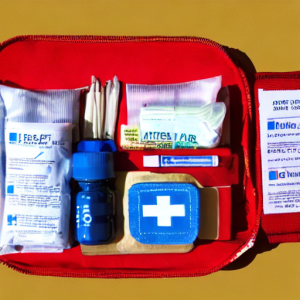 When unexpected injuries or medical issues arise, a thoroughly equipped first aid kit can act as a lifeline. Essential items should include bandages, adhesive tape, antiseptic wipes, pain relievers, tweezers, scissors, and any personal medications you may require. Consider also including items relevant to your outdoor activities, such as blister treatment kits for hikers or snakebite kits for those exploring regions where venomous snakes reside. Proper preparation can make a significant difference in emergency situations.
When unexpected injuries or medical issues arise, a thoroughly equipped first aid kit can act as a lifeline. Essential items should include bandages, adhesive tape, antiseptic wipes, pain relievers, tweezers, scissors, and any personal medications you may require. Consider also including items relevant to your outdoor activities, such as blister treatment kits for hikers or snakebite kits for those exploring regions where venomous snakes reside. Proper preparation can make a significant difference in emergency situations.
Equally important is understanding how to effectively utilize the items in your first aid kit. Basic knowledge of first aid can make a significant difference during emergencies. Skills such as cleaning and dressing wounds, applying bandages, and performing cardiopulmonary resuscitation (CPR) are invaluable. Resources like online tutorials and local first-aid classes can help you gain practical knowledge that may prove vital in situations where immediate medical help is unavailable. Empowering yourself with this knowledge enhances your overall readiness for outdoor adventures.
Prioritizing personal safety includes not only addressing the physical aspects of first aid but also mental and emotional considerations. To promote preventive care, be aware of your physical limits, maintain proper hydration, and recognize signs of exhaustion. Outdoor enthusiasts should also be mindful of potential psychological impacts caused by unforeseen events, such as becoming lost or encountering severe weather. Developing mental readiness and resilience is an essential component of overall health in outdoor settings. This holistic approach to health can significantly improve your outdoor experiences.
Essential Wilderness Tools: Equip Yourself for Ultimate Survival Success
Having the right tools can be the deciding factor in thriving in the wilderness versus merely surviving its challenges. A well-equipped wilderness toolkit includes essential items that cater to various tasks, from constructing shelters to addressing unforeseen obstacles. Key tools such as a knife, multi-tool, and paracord are vital components of your survival kit, each contributing to your adaptability and effectiveness in the wild. The right gear can enhance your confidence and capabilities during outdoor adventures.
A high-quality knife is arguably the most important element of any wilderness gear. Its versatility spans food preparation, cutting branches for shelter construction, and many other tasks. When selecting a knife, prioritize durability and sharpness, as it should function for various uses, including carving, hunting, and even self-defense. With proper care and maintenance, a reliable knife can serve as a lifelong companion in the wilderness, proving invaluable in countless situations.
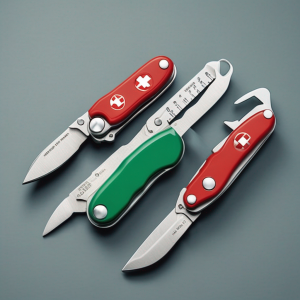 A multi-tool is another essential addition, offering a compact solution to multiple challenges. This versatile device can assist with gear repairs, construction tasks, or improvising solutions to unexpected problems. Equipped with functions such as pliers, screwdrivers, scissors, and more, a multi-tool is easy to carry and ensures you always have access to various essential tools at your fingertips. Having this all-in-one tool can simplify numerous tasks in the wilderness.
A multi-tool is another essential addition, offering a compact solution to multiple challenges. This versatile device can assist with gear repairs, construction tasks, or improvising solutions to unexpected problems. Equipped with functions such as pliers, screwdrivers, scissors, and more, a multi-tool is easy to carry and ensures you always have access to various essential tools at your fingertips. Having this all-in-one tool can simplify numerous tasks in the wilderness.
Paracord, short for “parachute cord,” is an underestimated yet multifunctional tool. Its strength and versatility make it invaluable for building shelters, securing gear, or crafting innovative solutions. You can unravel paracord to expose its inner strands, each serving unique purposes. In survival situations, paracord can be employed for a wide range of tasks, including making snares or performing emergency repairs. Its adaptability to various situations can significantly enhance your survival strategies.
To prepare effectively for the unpredictability of the wilderness, ensure your survival kit includes these essential tools. Beyond their primary functions, these items can also assist in creating signaling devices, establishing traps for foraging, and managing medical emergencies. Familiarizing yourself with your wilderness gear enhances your resourcefulness and adaptability in unexpected circumstances. Proper knowledge of your tools can empower you to tackle challenges head-on.
When selecting a knife, consider factors like blade material, handle design, and overall durability. Look for a knife that strikes a balance between sharpness for cutting tasks and sturdiness for demanding applications, ensuring it meets your specific needs. Taking the time to select the right knife can greatly enhance your experiences in the wilderness.
Different types of paracord exist, and not all are created equal. Type III paracord, also known as military-spec paracord, is renowned for its excellent strength and reliability. Ensure that the paracord in your kit meets high standards, as it can be essential for tasks requiring resilience in challenging conditions. Investing in quality gear can pay dividends in critical situations.
Regularly inspect and maintain your tools to ensure they are in optimal condition. A well-maintained knife, multi-tool, and paracord can become invaluable assets in critical situations, significantly strengthening your ability to navigate and thrive in the wilderness. Proper upkeep of your gear ensures they are ready for action when you need them most.
Layering Techniques for Wilderness Survival: Dress Wisely for Changing Elements
Mastering the art of layering can be transformative in unpredictable weather conditions. Dressing appropriately for survival in the wilderness is essential for maintaining your well-being and optimizing your performance. Layering is a versatile technique that allows you to regulate your body temperature by adding or removing clothing based on environmental conditions. This method helps you adapt to fluctuating temperatures, preventing overheating or excessive cold—both of which can be detrimental in survival scenarios. The right clothing can enhance your comfort and increase your chances of survival.
The primary layer, known as the base layer, focuses on moisture management. Selecting moisture-wicking clothing is crucial, as it draws sweat away from your skin, preventing hypothermia and keeping you dry and comfortable. This layer is particularly beneficial during physical activities, such as hiking or when urgently moving through challenging conditions. Proper moisture management is key to maintaining your body’s temperature and comfort.
Next, the insulating layer provides warmth by trapping and retaining body heat. Materials like fleece or down are highly recommended for insulation, as they offer lightweight warmth without excessive bulk. You can adjust this layer according to temperature and activity levels, ensuring you maintain optimal body heat in chilly conditions. This adaptability allows you to stay comfortable in various outdoor environments.
The outermost layer, or shell, serves as a protective barrier against wind, rain, and snow. This layer must be both waterproof and windproof to safeguard against harsh weather conditions. Investing in a high-quality, breathable jacket or outer shell is vital to prevent moisture buildup from perspiration while providing adequate protection against the elements. The right outer layer can be crucial for your comfort and safety in adverse weather.
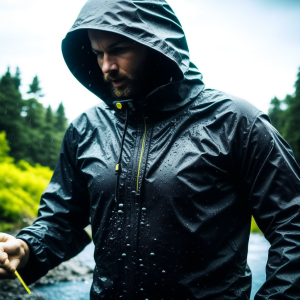 In addition to layering, ensure you include rain gear in your survival kit. Staying dry is crucial to prevent hypothermia, which can develop quickly in cold and wet conditions. Essential items include a rain cover for your backpack, a waterproof jacket, and pants. Look for gear with taped seams and durable water-repellent (DWR) coatings to maximize effectiveness against rain and moisture. Proper rain gear can be a lifesaver in wet conditions.
In addition to layering, ensure you include rain gear in your survival kit. Staying dry is crucial to prevent hypothermia, which can develop quickly in cold and wet conditions. Essential items include a rain cover for your backpack, a waterproof jacket, and pants. Look for gear with taped seams and durable water-repellent (DWR) coatings to maximize effectiveness against rain and moisture. Proper rain gear can be a lifesaver in wet conditions.
When determining the number of layers and types of clothing to wear, consider the season, terrain, and potential weather changes. Adjusting your clothing to match current conditions will help you maintain a comfortable body temperature, allowing you to focus on survival tasks rather than battling the environment. The right clothing strategy can significantly enhance your effectiveness and comfort in the wilderness.
Selecting appropriate footwear is also a critical aspect of your layered clothing strategy for survival. Choose boots that are not only waterproof but also durable, providing support and protection against the terrain you’ll encounter. Keeping your feet dry and comfortable can help prevent common issues like blisters and frostbite. Footwear is an often-overlooked element of outdoor gear that can drastically impact your experience.
Familiarizing yourself with layering concepts and applying them effectively is essential for overcoming the challenges posed by unpredictable wilderness conditions. Additionally, wearing suitable rain gear is vital for weather resilience. This strategic approach not only enhances your comfort but also plays a significant role in preventing weather-related health issues, contributing significantly to your overall survival strategy.
Wildlife Awareness: Stay Informed About Local Creatures and Safety Precautions
Comments are closed
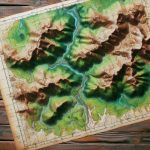

Your insights on wilderness survival resonate deeply with me, especially the emphasis on developing a resilient mindset. I remember my first solo camping trip in a remote area; it was thrilling until a sudden storm rolled in, and I quickly realized that panic would be my greatest enemy in that moment. I had to remind myself to breathe and assess my surroundings calmly, just as you suggest. Maintaining composure allowed me to make decisions based on the resources I had, like using the tarp to create a makeshift shelter.
Your experience on that solo camping trip really highlights the importance of maintaining a level head in unexpected situations. It’s interesting how nature forces us to confront our instincts—panic versus composure. When I think back to my own outdoor adventures, I recall a hiking trip where I got turned around in a dense fog. I had to consciously slow my breathing, just like you did in the storm, and focus on my immediate environment. In those moments, it’s almost as if everything else falls away, and you become acutely aware of what’s around you.